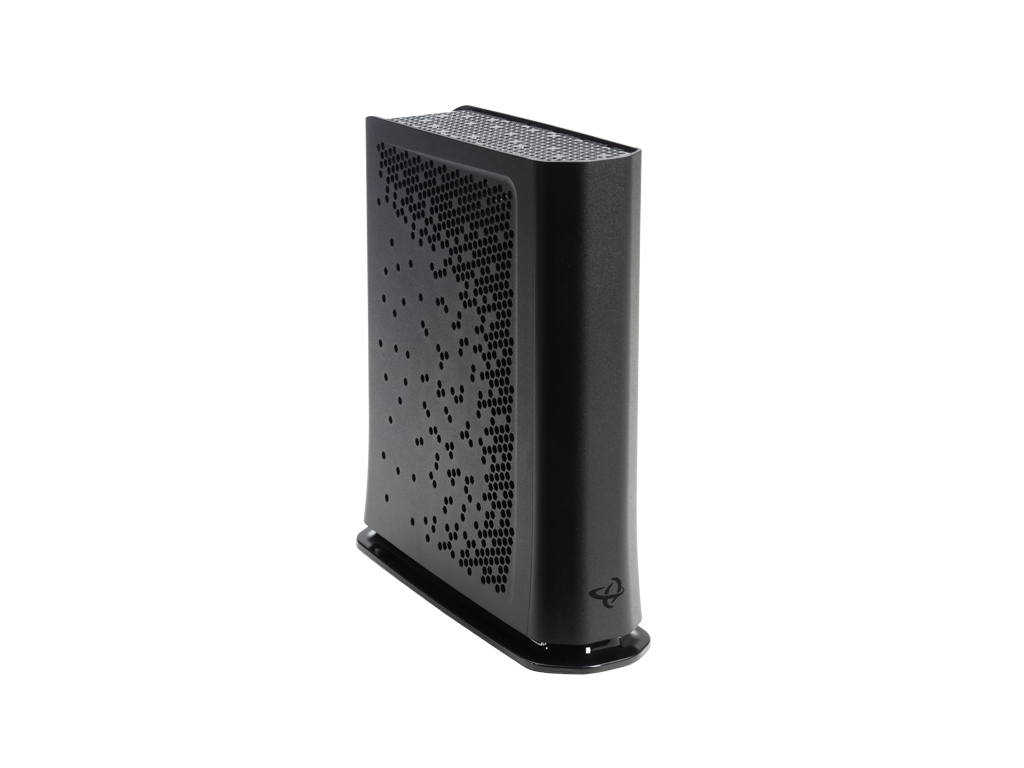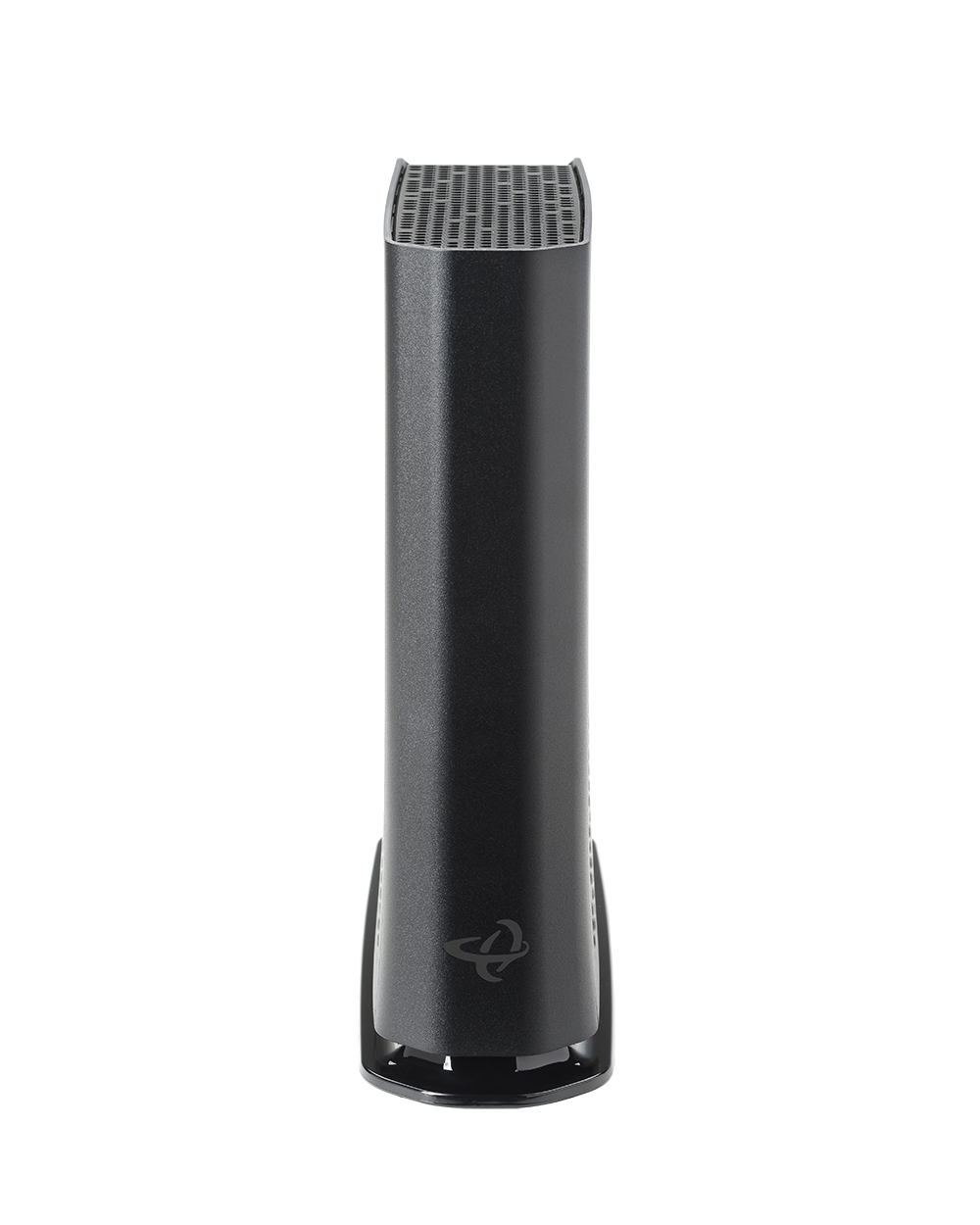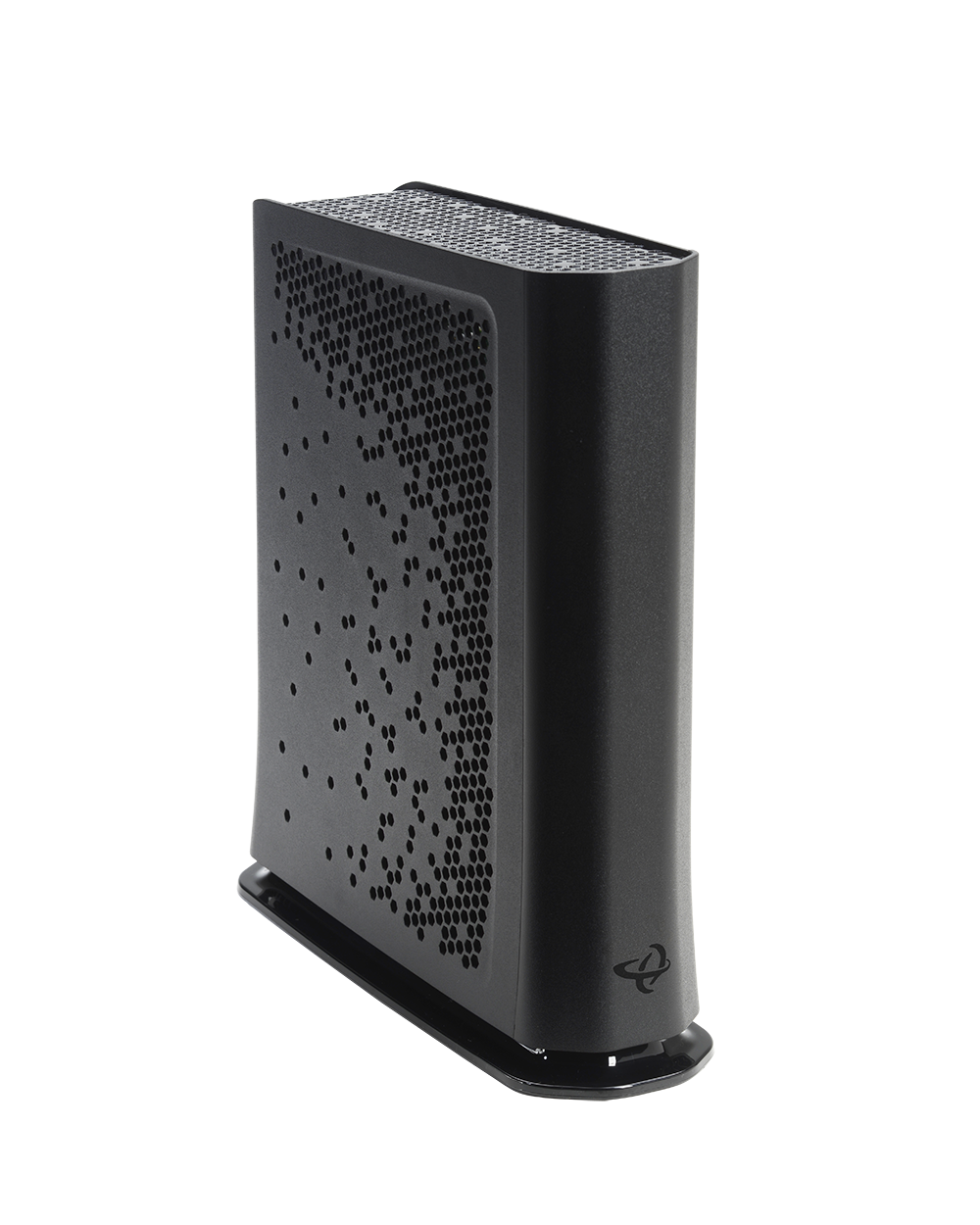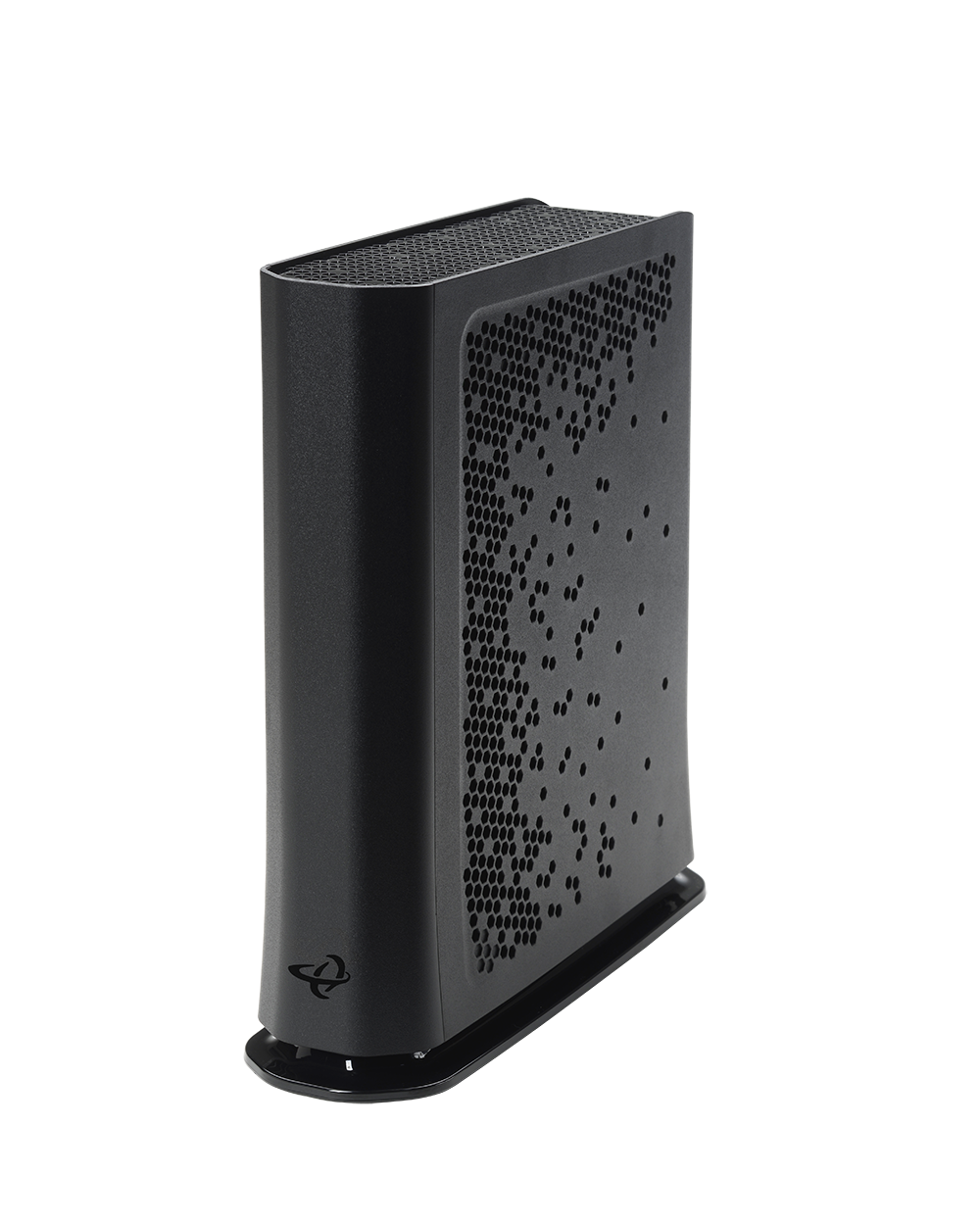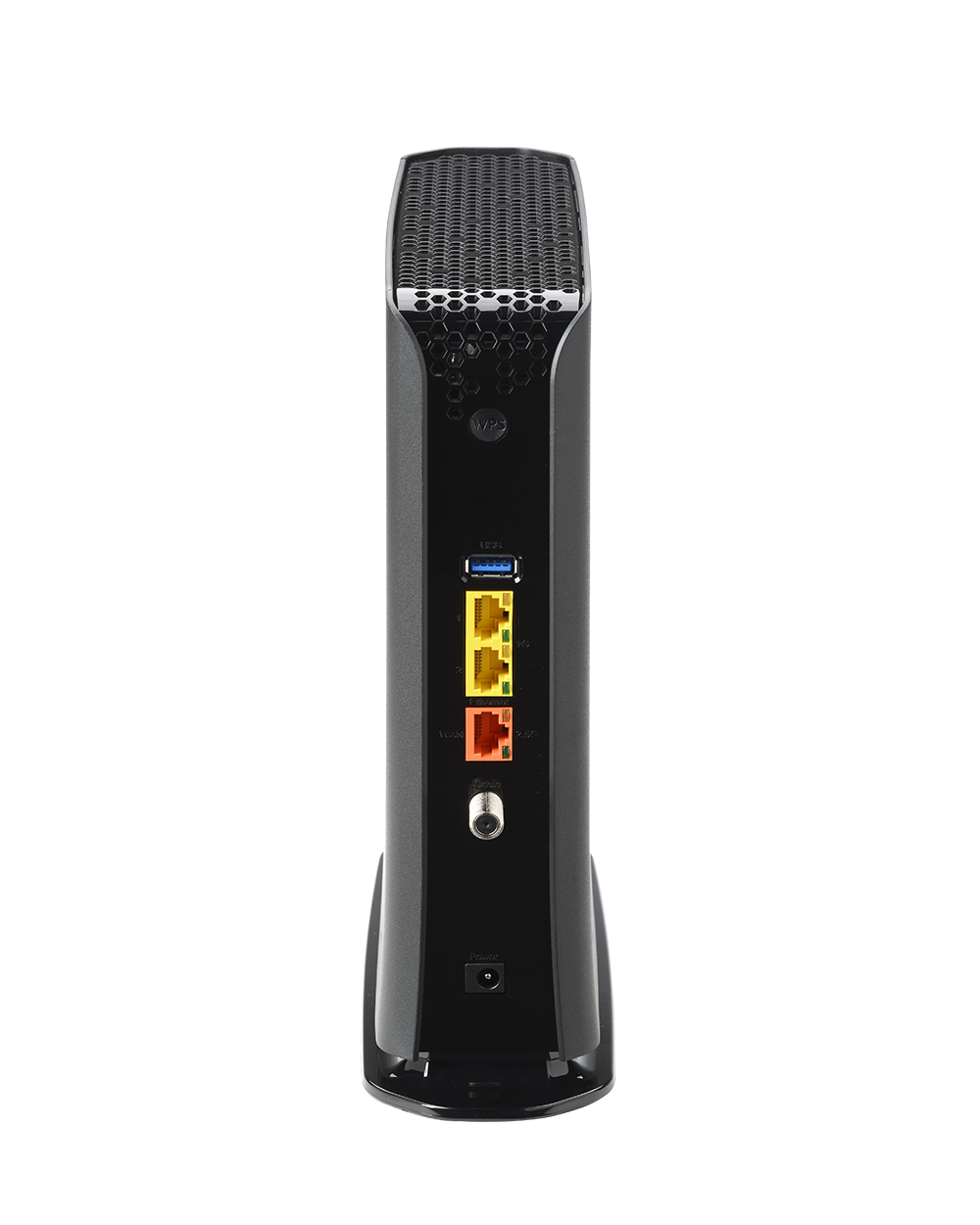DOCSIS 3.1 with DOCSIS 3.0 Compatibility
2×2 OFDM/OFDMA + 32×8 DOCSIS 3.0 bonding ensures multi-gigabit downstream capability with backward compatibility for existing networks.
Flexible Return Path for Future-Ready Upgrades
Switchable upstream (5–42 MHz / 5–85 MHz) supports migration to mid-split deployments without replacing hardware.
Wi-Fi 6 Advantage
Dual-band Wi-Fi 6 with 4×4 5 GHz and 4×4 2.4 GHz radios delivers faster speeds, better range, and more efficient use of spectrum to handle today’s connected homes.
Multi-Gig Wired Connectivity
2× 2.5 Gbps Ethernet ports plus 2× 1 Gbps ports support premium wired devices and high-bandwidth backhaul.
Carrier-Grade Management
TR-069, TR-369, HNAP, SNMP, and TFTP for simplified provisioning and remote troubleshooting—reducing support costs and truck rolls.
TPIA Market Approved
Approved by many Canadian carriers for the TPIA market, ensuring wide compatibility and streamlined deployments for wholesale ISPs.
Benefits for Service Providers
- Optimized for Mid-Tier Service Plans: Provides reliable Wi-Fi 6 and multi-gig wired support without overspecifying for basic packages.
- Simplified Deployments: Combines modem and router functionality into a single, operator-friendly gateway.
- Proven Market Acceptance: Pre-approved for TPIA use by leading Canadian carriers, making it easy to adopt and deploy at scale.
- Subscriber Satisfaction: Meets the growing demand for faster, more stable Wi-Fi and wired performance in modern households.
Key Specifications
- DOCSIS Support: DOCSIS 3.1 (2×2 OFDM/OFDMA) + DOCSIS 3.0 (32×8)
- Upstream: Switchable 5–42 MHz / 5–85 MHz
- Wi-Fi: Dual-band Wi-Fi 6 (4×4 5 GHz + 4×4 2.4 GHz)
- Ethernet Ports: 2× 2.5 Gbps + 2× 1 Gbps
- Management: TR-069, TR-369, HNAP, SNMP, TFTP
- Other Features: IPv4/IPv6, multiple SSIDs, integrated DLNA media server, advanced firewall
Documentation
Other Products to Consider
Product
Modem Type
Frequency
WiFi
Wired LAN
Voice
Learn More about Cable Modems & Routers
Modems, Routers and Gateways Explained
Having a better understanding about modems, routers and gateways, what these devices are and how they work, will help you decide which you need and what kind of Internet connection you will have (wired or wireless). Here’s what you need to know: Modem A modem is a...
Router vs Gateway vs Modem for Cable Internet: Which do I need?
To get cable Internet in your home, there are a few devices that you need to know about: Cable modem Router Gateway The difference is whether you want two devices or one device to get an Internet connection. There are pros and cons to each option. For cable Internet,...
Replacing Your Spectrum Internet Cable Modem
This page refers to buying a cable modem. We have more information on the pros and cons of buying versus renting devices, but this page does not pertain to rentals. When you are looking to replace a device, you need to consider a few things: Which Internet service...
What’s required to be an approved Xfinity modem router?
When setting up your wireless home Internet network, you need a router. You also need a modem. A modem and router communicate with one another to transfer and translate data from your Internet service provider (ISP) to your devices. We have many resources covering...
Buying vs Renting a Router
To get an Internet connection in your home, you need a modem of some type. The modem communicates with your Internet service provider (ISP), but to get wireless internet (Wi-Fi) you also need a router. The router is a critical part of your home Wi-Fi or office Wi-Fi...
